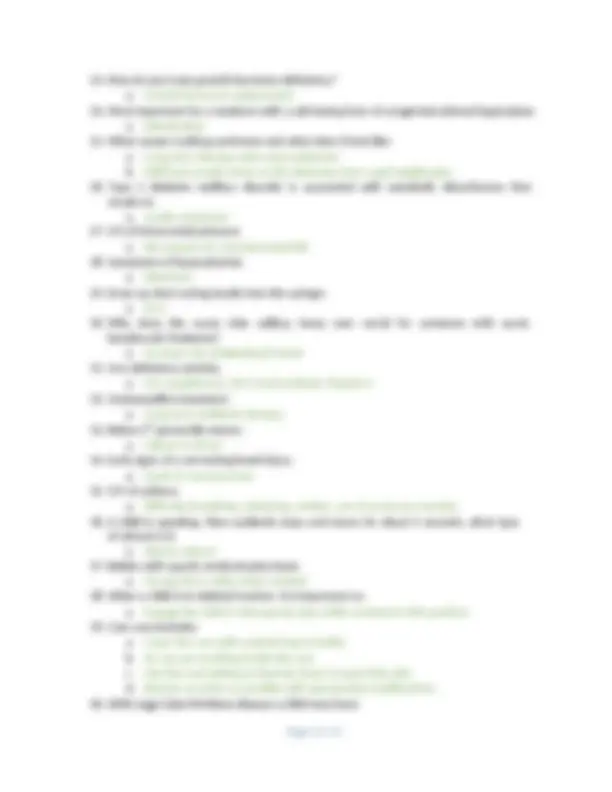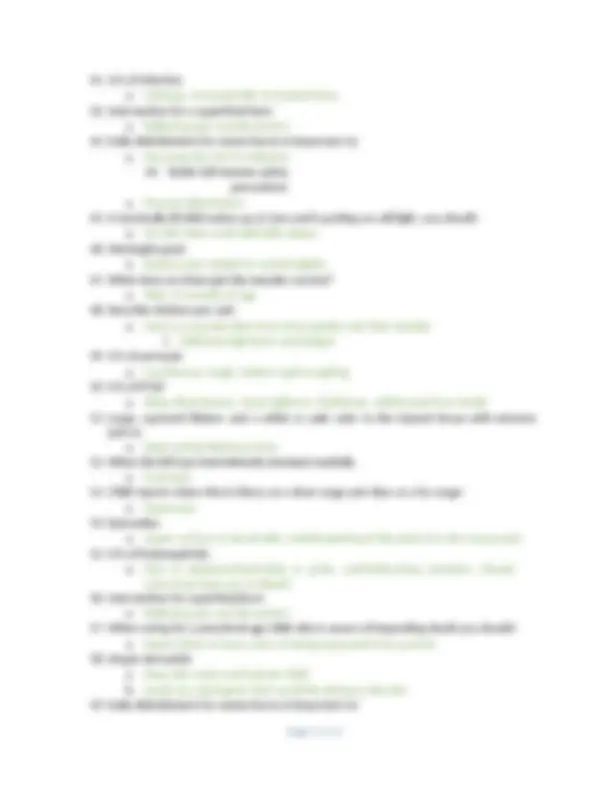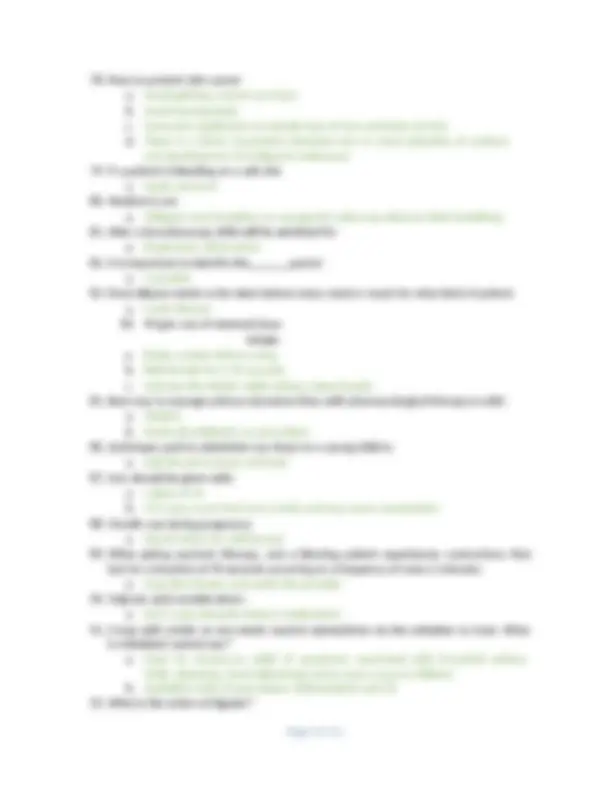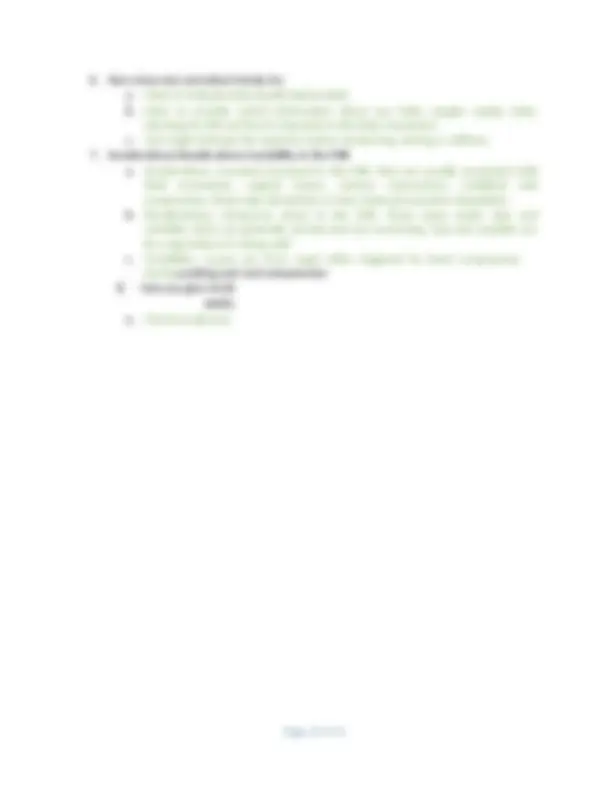NUR 2513>MCH final exam
1. Expected findings for bacterial pneumonia
a. Ronchi (crackles), SOB, fever
2. What reflects safe practice in administration of blood products
a. Remain with the patient for the first 15 minutes of the infusion (2 nurse sign off)
3. Kawasaki Disease
a. S/S: strawberry tongue, edema of hands and feet, conjunctivitis without exudate
4. Bronchiolitis home treatment
a. Humidifier
5. Pharyngitis causes increased risk for developing
a. Rheumatic fever
6. Post tonsillectomy, clear fluids are best
a. Avoid carbonated beverages, acidic or red dyes
7. Signs and Symptoms of pneumonia
a. SOB, crackles, using accessory muscles, diminished sounds
8. Epiglottitis position
a. Upright
9. A new heart noninvasive diagnostic testing:
a. First echocardiogram
10. Legg-Calve-Perthes disease a child may have:
a. A non-weight bearing period
11. Symptoms associated with patent ductus arteriosus
a. Machine like murmur head at the left sub clavicular margin
12. Contraction of aorta
a. Be sure to assess femoral and radial pulses simultaneously
13. What to do when a tetralogy of Fallot patient becomes cyanotic and dyspneic
a. Place in knee chest position
14. Initial nursing interventions for sickle cell anemia
a. Hydration and pain management
15. What to do for severe dehydration
a. IV fluids
16. Mild to moderate
a. try oral hydration first
17. Adolescents are at greater risk for developing a STI because they are:
a. Engaging in risky behaviors
18. A nurse would do what with a voiding cystourethrogram
a. Insert foley catheter for instillation of contrast
19. Kidney transplant post op care would include:
a. Reduce socialization, infection control precautions
20. Treatment for croup:
a. Corticosteroids
Page 1 of 13






















